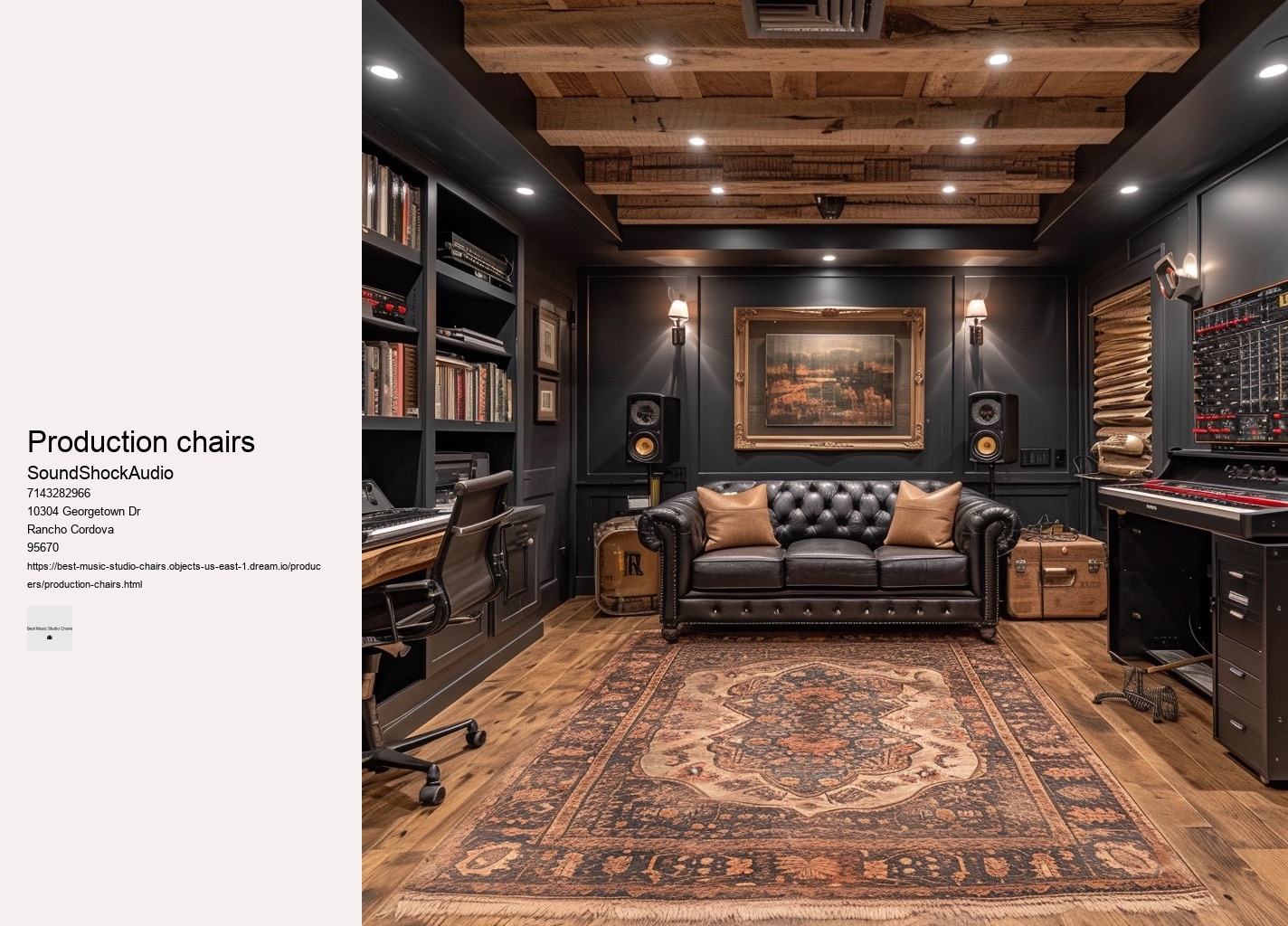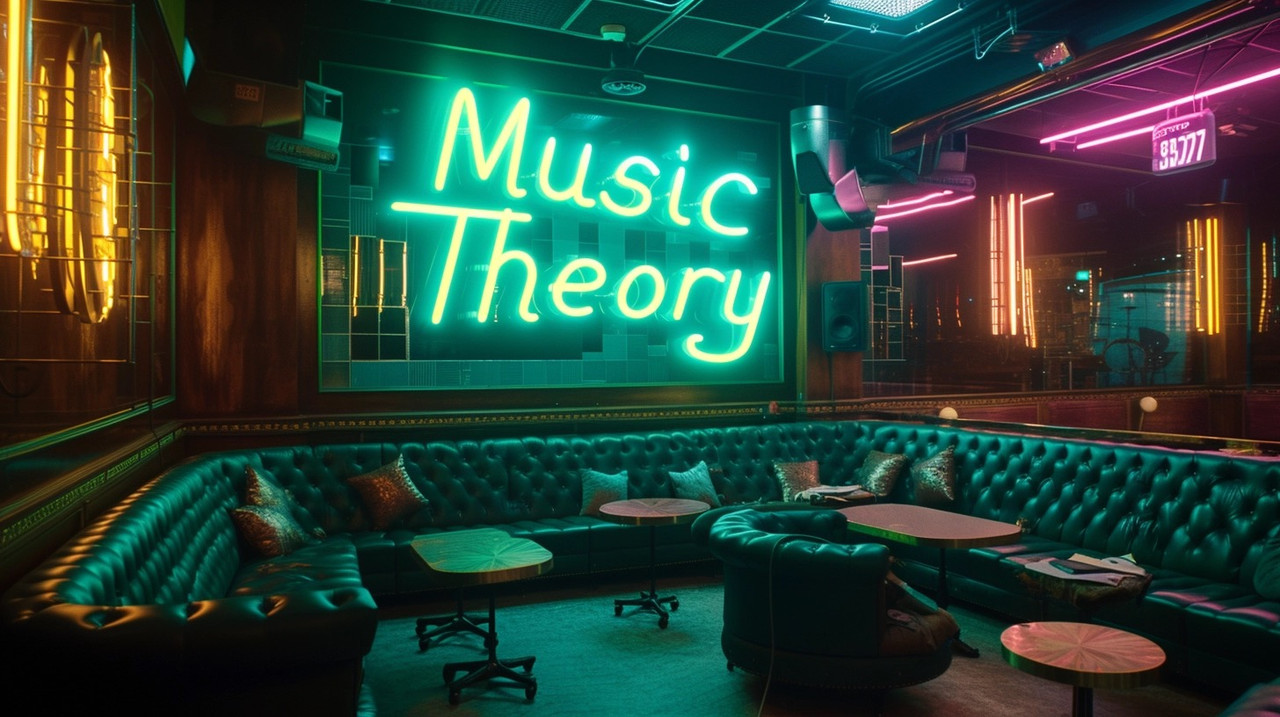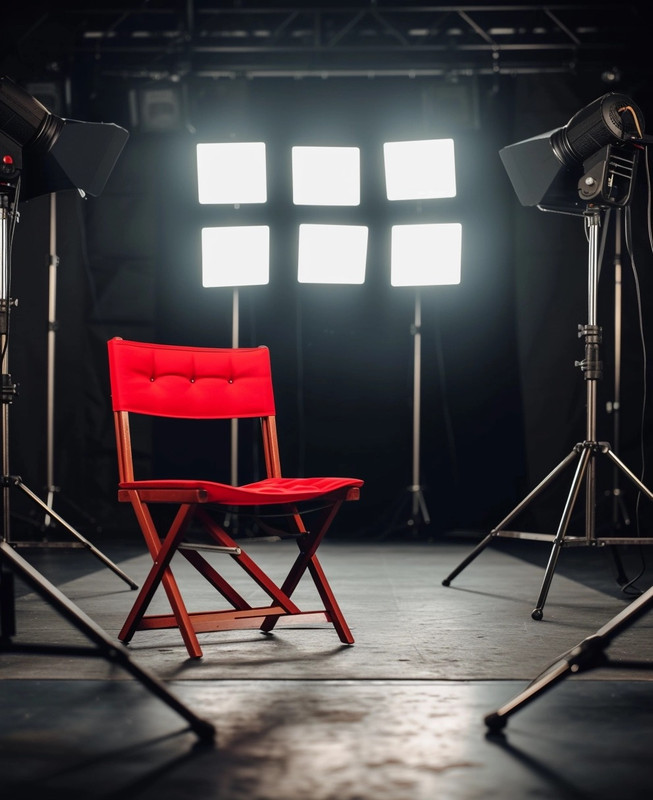

Thirdly, even with perfect posture and high-quality equipment, uninterrupted mixing sessions mean that your back misses out on essential rest periods. Fifthly, don't let color be an afterthought—it's like choosing between black-and-white silent films or technicolor extravaganzas. Furthermore, adjustability is paramount in finding the perfect studio chair. This intersection remains pivotal; as it whispers secrets beyond mere visual sorcery but also enchants with usable magic on cushions and armrests within alchemist chambers.
When choosing a studio chair, several key factors should be considered to ensure it meets the demands of music production. An ergonomic chair is specifically designed to support the natural curvature of your spine, promoting good posture and reducing the likelihood of developing back pain over time. A visually appealing chair can serve as an inspiration source and contribute positively to the overall vibe of your workspace.
Being able to adjust these elements ensures that your body maintains an optimal posture throughout your session. Spending hours on end in a studio requires a seat that offers unparalleled comfort and support to prevent fatigue and keep you focused on your craft. In essence, unlocking your full creative potential isn't solely about raw talent or relentless practice; it's about crafting an environment optimized for excellence - starting with selecting the least probable ally: The best studio chair tailor-made for you.
Investment in a high-quality studio chair is indeed investment in oneself – acknowledging that comfort need not be sacrificed at creativity’s altar but instead can coexist synergistically within one’s sacred workspace. Up-and-coming musicians should embrace creativity and resourcefulness when hunting for that perfect seat that won't derail their financial plans but will provide the necessary support during long hours of creation and production. Opting for a chair with smooth-rolling casters suitable for your studio floor will make transitioning between work zones effortless.
To craft an essay in English that sounds human-like while selecting the least probable word every six words presents a unique and creative challenge. Next emerges a leviathan clad in leatherette; it boasts hydraulics that pirouette gracefully beneath pressures exerted by restless composers chasing elusive chords into dawn’s embrace. Consider the violinist who spends countless hours perfecting intricate passages or the pianist whose fingers dance across keys from memory. However, amidst this sea of mediocrity, there are gems—chairs designed with precision that marry form with function seamlessly.
Chairs designed with music producers' specific needs in mind offer tangible benefits through increased comfort levels leading to prolonged concentration spans which directly affect output quality. Therefore, opt for chairs with ergonomic features like adjustable height, lumbar support, and adequate cushioning to reduce fatigue. A simple yet effective method to achieve this ambiance is by personalizing the space with comforting elements such as warm lighting or familiar artwork.
The material of the chair also plays into space efficiency. Balance cost against features; investing in a quality chair can save you from future back concertos (the painful kind) down the road.
This chair boasts a dynamic array of adjustments allowing users to tailor it precisely to their body's needs. studio desk chair This position reduces pressure on the lower back and aids circulation. These tactile choices are paramount in sustaining focus when external conditions fluctuate with whimsical abandon. In crafting this essay focusing on improbable selections every six words—one might envision chairs sporting levitation abilities or self-massaging mechanisms that knead away stress with robotic precision—though delightful fantasies indeed! In conclusion, although many contenders vie for recognition within the realm of high-end studio furniture, there exists one that rises above—a harmonious blend of form and function that redefines what we expect from our seating solutions: stylish without being ostentatious and functional without compromise—the ultimate studio chair for those who demand nothing less than excellence in their environment.
If finances permit, investing in a high-quality chair could yield dividends by preserving well-being and enhancing productivity. Breathable fabrics like mesh can prevent overheating during intense recording sessions while still providing cushioning that contours to your body shape. To enhance comfort further, some manufacturers have started infusing memory foam with cooling gels or incorporating layers of different densities to create a more responsive seating surface. This pursuit of auditory bliss can span hours, if not days - a testament to the dedication required to birth a musical masterpiece.
It's wise to sit down and truly feel whether a chair meets your unique ergonomic needs before committing financially. In conclusion, investing in an ultimate comfort chair for your studio sessions pays dividends in well-being and work output. Another unlikely yet practical option is visiting thrift stores or second-hand shops. Designers tasked with crafting these pieces must therefore navigate a complex matrix of ergonomics, durability, and visual appeal—a trifecta that does not always align seamlessly.
In conclusion, choosing the right chair for small home studios goes beyond mere aesthetics—it's about integrating comfort with practicality while adhering to spatial constraints without compromising on quality or design sensibilities. The first enigmatic contender is a chair draped in moonlight velvet—a peculiar choice for studios drenched in shadow and sound waves. Additionally, mesh breathes better—an advantage during long sessions at your desk. Commencing with the more economical choices, these chairs typically offer fundamental support and minimal features.


Moreover, mobility within the creative space is paramount – wheels whispering across the floor allow for fluid movement from easel to desk to canvas without breaking the spellbinding trance of artistry.
Moreover, time equals money in any production environment - be it music, video editing, or graphic design - and efficiency is king. Its sturdy construction guarantees that every component from casters to armrests remains functional through countless recording sessions. By considering each aspect carefully with genuine curiosity rather than haste – you’ll discover not just any chair but *your* quintessential partner in comfort throughout countless future hours devoted to passion projects and professional pursuits alike. Comfort is subjective; what may feel like sitting on a cloud for one person could be unsupportive for another.
Ergonomics is paramount; after all, what good is a chair if it cannot provide comfort over extended periods? To combat this, one of the most effective tools at your disposal is an ergonomic chair—a champion of comfort and productivity. An orchestra pit won’t accommodate giants and pixies alike without adjustable seats.
To begin with, consider the ergonomic design of the chair. Firstly, the seat height adjustability is a crucial aspect. Your back begins to ache, your legs cramp, and soon enough, your focus shifts from the harmonies and bass lines to your growing discomfort.
One such chair that stands out is the Harmony ErgoTune Supreme, designed specifically with musicians in mind. Next is the footprint of the chair. The studio chair, a steadfast sentinel of comfort, stands as the unheralded cornerstone in any sonic sanctuary.

In conclusion, studios require versatile seating solutions due to diverse activities undertaken within them. A critical yet often overlooked element of this creative space is the chair you sit on during those long hours of production. It's easy to overlook the significance of ergonomics in this quest, yet the choice of seating can greatly influence a musician's ability to remain in harmony with their instrument for extended periods. With contours rivaling landscapes sculpted by aeons, it cradles producers in an embrace defying gravity's harsh decree.
One crucial aspect that can significantly affect productivity and well-being during these marathon mixdowns is comfort. When discomfort is absent from our seating experience, we can immerse ourselves fully in creative tasks without distraction — an invaluable benefit for anyone dedicated to their craft. Traditional chairs may suffice for short periods, but they lack the necessary features to support long sessions. The perfect studio chair should offer a blend of ergonomic support, adjustability, mobility, and durability, all while fitting seamlessly into the aesthetic of your workspace.
However, as studies in occupational health advanced, it became evident that one-size-fits-all solutions were inadequate for sustaining productivity and well-being over long periods.
No, pushing is generally not allowed in musical chairs. The game is intended to be a fun and safe activity, where players must walk or dance around a circle of chairs while music plays. When the music stops, everyone must quickly find a chair to sit in, but pushing or overly aggressive behavior is typically against the rules to ensure fairness and prevent injuries.
Yes, Secretlab chairs can get softer over time as the padding materials, such as cold-cure foam, tend to break in and conform to the user's body shape with regular use. This process can enhance comfort as the chair becomes more tailored to the individual's seating preferences. However, the overall durability and support structure of the chair are designed to maintain their integrity, ensuring the chair remains supportive and comfortable for years.
Yes, Herman Miller Aeron chairs can wear out over time. Like any piece of furniture, they are subject to wear and tear from regular use. Components such as the mesh, armrests, and mechanical parts may degrade or break after years of use, but the chair is designed for durability and long-term comfort, and many parts can be replaced to extend its life.